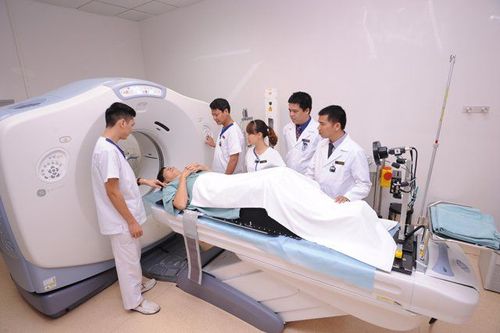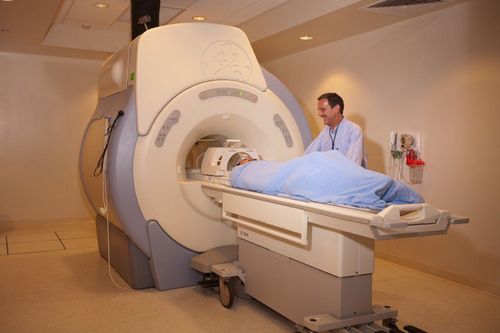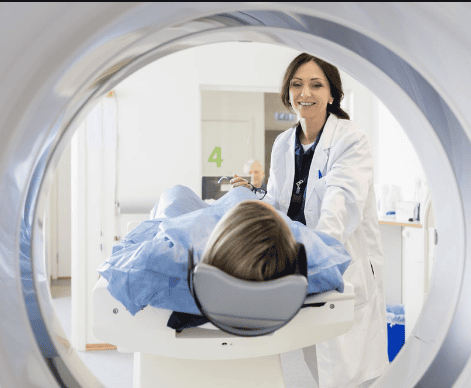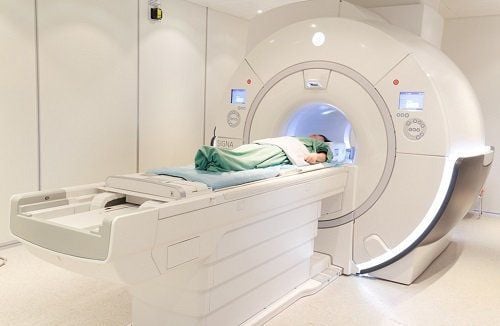This is an automatically translated article.
The article was professionally consulted by Specialist Doctor I Vo Cong Hien - Radiologist - Radiology Department - Vinmec Nha Trang International General Hospital.Magnetic resonance cholangiography is a valuable technique in the diagnosis of biliary tract diseases. This is a non-invasive, non-radioactive technique that produces detailed anatomical images that can detect lesions and structural morphology in the body.
1. MRI of the biliary tract
Magnetic resonance imaging (MRI) is a modern medical imaging technique that uses magnetic fields and radio waves. Biliary magnetic resonance is a highly valuable technique in the investigation of biliary tract disease.High-contrast MRI images, giving anatomical details that can accurately detect morphological and axial lesions of parts of the body. The ability to create 3D images without causing side effects should be widely applied in the diagnosis of biliary tract diseases in particular and different specialties in general.
Magnetic resonance cholangiography has the following advantages and disadvantages:
Advantages: Non-invasive, non-radioactive, non-anesthetic, better identifies the biliary tract above the obstruction, can be combined with T1-weighted images and T2-weighted images to assess extra-bile duct injury. Disadvantage: The spatial resolution is not high compared to endoscopic retrograde cholangiopathy. Therefore, the sensitivity is reduced in detecting peripheral biliary abnormalities.

Cộng hưởng từ đường mật là kỹ thuật có giá trị cao trong khảo sát bệnh đường mật
2. Indication for MRI scan
Indications for cholangiography in the following cases:Detection and follow-up after treatment of cholangiocarcinoma Detecting gallstones Assessing biliary dilatation Preoperative staging in cholangiocarcinoma Evaluation of Congenital abnormalities of the biliary tract
3. Pictures of some biliary tract diseases
3.1 Gallstones Gallstones are a common disease. The composition of stones is usually about 70% cholesterol stones and about 30% bile pigment stones. Predisposing factors to stone formation such as infectious pathology, metabolic disorders, cholestasis, hemolytic disease, genetics,...Imaging features include:
Hypergravitation lying down in the biliary tract Dilatation of the biliary tree anterior to the stone Cholesterol stones usually have the same density as the bile. 3.2 Cholangiocarcinomas Cholangiocarcinomas may be benign or malignant. Benign tumors include: gallbladder polyps, gallbladder adenomas, ... can be diagnosed on ultrasound and some other types of tumors are rare.
Malignancies include: Cholangiocarcinoma and gallbladder cancer. In which primary gallbladder cancer is often accompanied by gallstones or porcelain gallbladder, more common in women than in men. Imaging features on MRI are usually a large, heterogeneous mass with irregular enhancement. Some other signs include:
Invasion of adjacent liver parenchyma Dilation of intrahepatic biliary tracts Hepatic hilar nodes Peritoneal metastasis Liver and distant metastases

Chụp cộng hưởng từ đường mật phát hiện sỏi đường mật
In summary, magnetic resonance cholangiopancreatography is a modern and widely applied medical diagnostic method. This is a non-invasive, non-radioactive technique that produces detailed anatomical images that can detect lesions and structural morphology in the body, valuable in the diagnosis of biliary tract diseases. .
Please dial HOTLINE for more information or register for an appointment HERE. Download MyVinmec app to make appointments faster and to manage your bookings easily.













